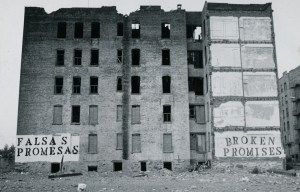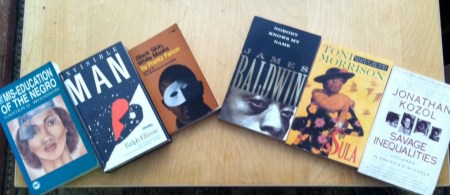Tags
Black History, History of Black Pittsburgh, Larry Glasco, Laurence Glasco, Pitt, Teaching and Learning, Wylie Avenue Days

It’s a bittersweet anniversary for me. Thirty years since the first time I was in a classroom as an instructor. Thirty years of providing professional development advice (because I assisted with undergraduate advising of history majors in 1991 also). Thirty years of traveling this path, whether in higher education, the nonprofit world, or as a consultant. Thirty years of being seen as “less than,” of exploitation, of disappointment, of disrespect, regardless of my degree status or age or how I dressed. Thirty years of the occasional thanks or pat on the back for a job well done. Thirty years. Maybe too long for a person who should have always put being a writer first.
It was the first Thursday in November 1991 when my advisor Larry (Laurence Glasco) had me run his brand-new course for one evening, History of Black Pittsburgh. It was one of my elective courses toward my MA in History degree, an easy-A in the midst of two core courses, third-semester Swahili, and a primary research paper project on the intercultural education movement. I had fully-charged Energizer bunny energy back then.
Larry’s History of Black Pittsburgh was an evening block course, which at the University of Pittsburgh meant that it met from 5:45 to 8:10 pm. The class met in one of the auditorium-style rooms in David G. Lawrence Hall. The object that evening was for the class to watch and then discuss/critique the documentary “Wylie Avenue Days.” It was a film about the cultural heyday of the Lower and Upper Hill District, Black “Picksburgh’s” mecca from the 1920s until urban renewal wiped out the Lower Hill to build a sports arena in 1958. The film, though, continued through the 1960s, when somehow, the remnants of the Lower Hill did not explode in uprising and riot after MLK’s assassination, but marched in massive protest instead.
I was terrified of the idea of being in front of any classroom in 1991. But with 15 of the 35 students in the course over the age of 35 — and some old enough to have met and have known the people who were in the film — my stomach did flips in the days before I had to run the class. Larry sensed this, I think, which was why he gave me this assignment to begin with. “You’ll do fine, Donald” was the only thing Larry said to me about guest lecturing that day.
Looking back, it was a pretty easy assignment. The documentary took up an hour by itself, and with a ten-minute break, all I really had to do was facilitate discussion for an hour. No big deal.
But it was a big deal. With about 20 traditional college-aged students (mostly Black, with a few brave white Yinzers), the older students would dominate the conversation about “Wylie Avenue Days,” about meeting jazz artist Billy Eckstine or swooning over Lena Horne, about how the clubs were “integrated” every Saturday night between “6 pm and 6 am.” They also discussed the need for community reliance and self-sufficiency, because shopping for clothes “dahntahn” at Horne’s, while not Jim Crow illegal, certainly could get Black Picksburghers in trouble.
We also had retired Pittsburgh Courier correspondent Frank Bolden in the classroom that night. Larry had Bolden as a guest speaker earlier in the course. Bolden would show up on occasion and just hang out and add a story here or there to provide a living perspective on something that would otherwise only be a footnote in a newspaper article or a book. Bolden was in his eighties by this time, so he had a lifetime of stories.
With so many older students and guests in the audience, I barely had to ask any questions at all. My main challenge was to find a way to get the younger students involved, but after a couple of quick comments, I realized that it was better for them to listen and learn than for me to run a more typical and less free-flowing discussion.
The older students were extremely respectful. They kept calling me “Mr. Collins” or “Professor,” even though Larry and I had told them I was just a first-year grad student. “Don’t pay that no never mind,” one of the other students said. “You up there, you a professor.” And then they kept talking about the good-old days, the sense of community on the Lower Hill, and then, the end of it all because of urban renewal and eminent domain.
The class went over by ten minutes, and the younger students began to leave. But a core group of about 10 of the students and Bolden stayed until after 8:30. The last of us didn’t leave until after 9. “Larry, I have to admit, this was fun,” I remember me saying afterward, before catching a bus back to East Liberty and home.
I have TAed for or taught 95 standalone classes in the 30 years since, helped run a national social justice and leadership development project and a national education reform project, and have directly and indirectly worked with thousands of high school, undergraduate, and graduate students since. There have been more good days than difficult ones, and more than a few great discussions and wonderful times with the 2,500 students I have taught directly.
I must thank Larry for the opportunity, and for allowing me to use his class and classroom as a way to break out of my shell, to get over my social anxiety and other insecurities about being in front of fickle crowds. And yes, students, especially the younger ones, are a fickle bunch, more jaded these days than in the 1990s. I wonder why…
Will I do this thing called teaching another 30 years, just like Larry is still doing? I do not know. If I am doing this into my eighties, I would have to be able to teach the courses I want to teach, not the courses I am assigned or the courses that I’ve designed but are picked apart by the affluent and white who may be a little uncomfortable with my critiques of the rich and powerful, of the capitalistic and the racist. Especially as I have added American narcissism to these critiques. Ha! Here’s 30 years!












